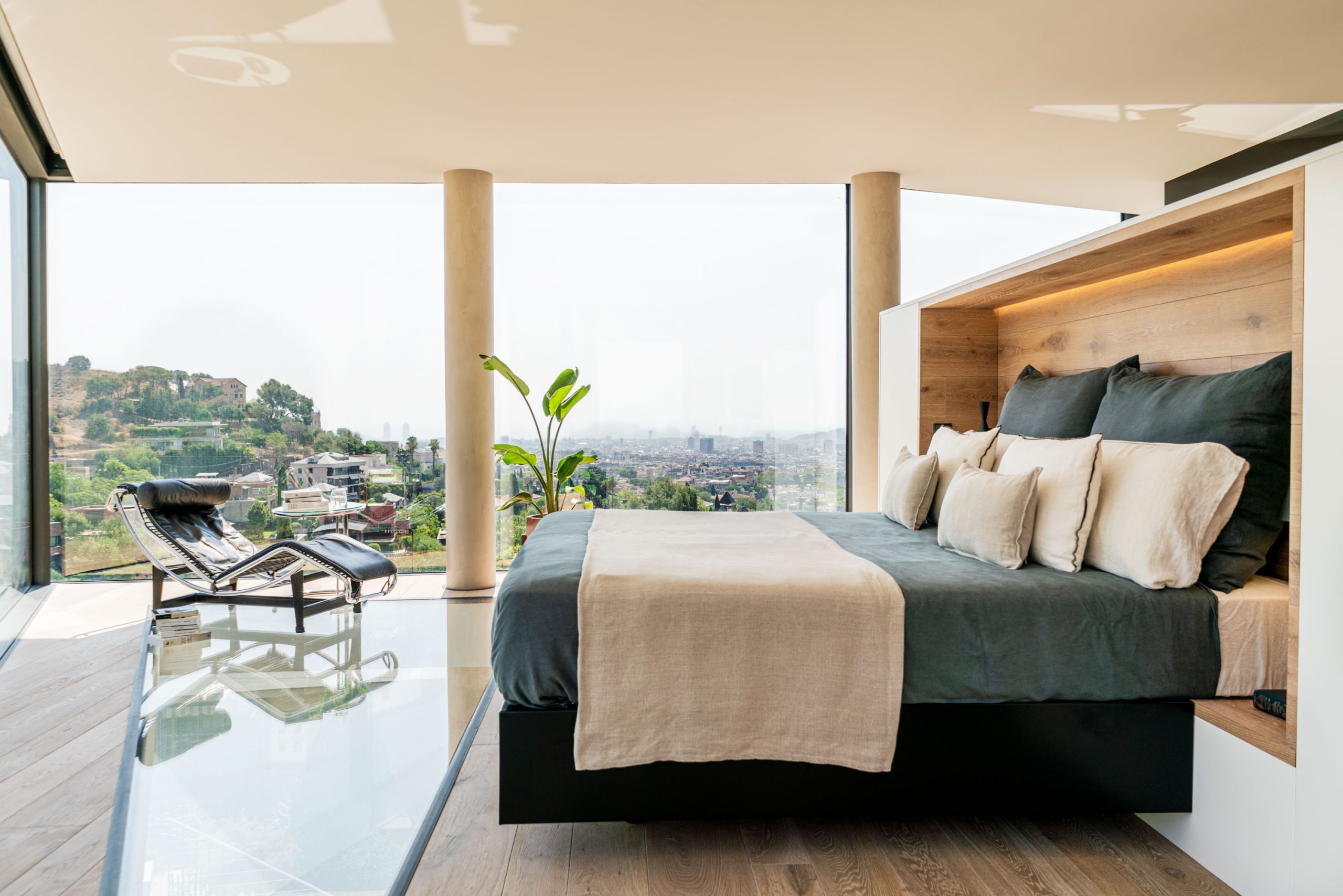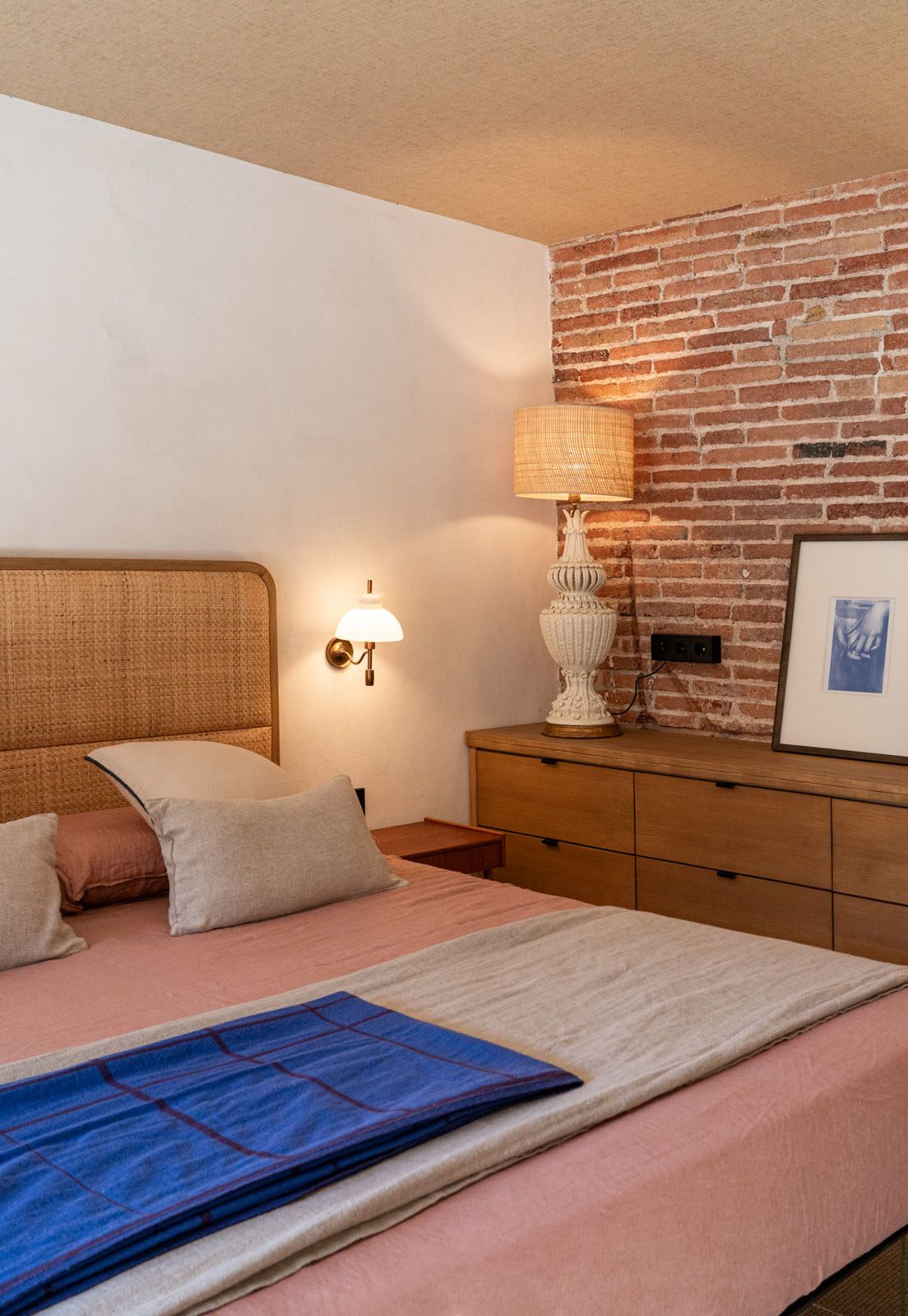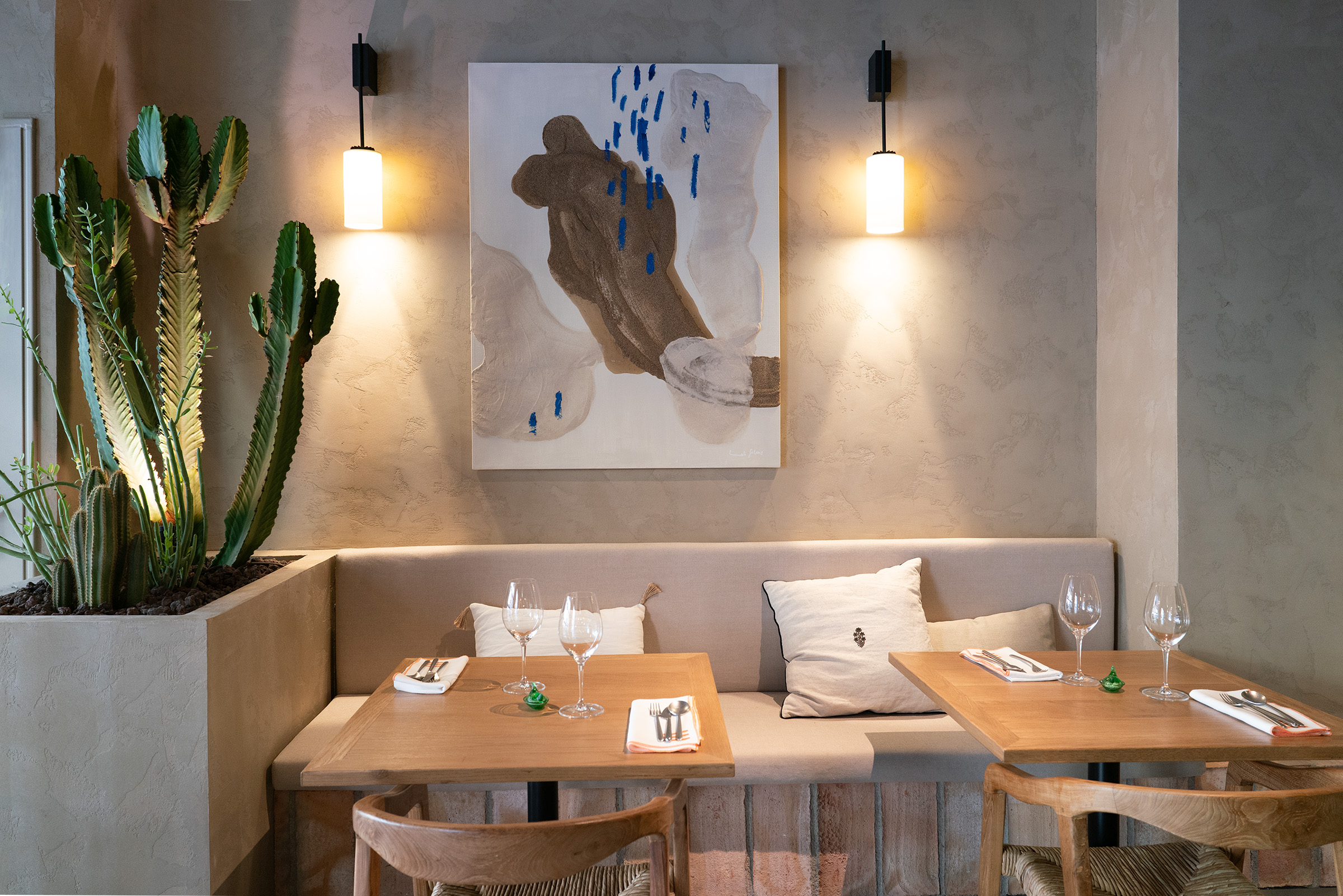
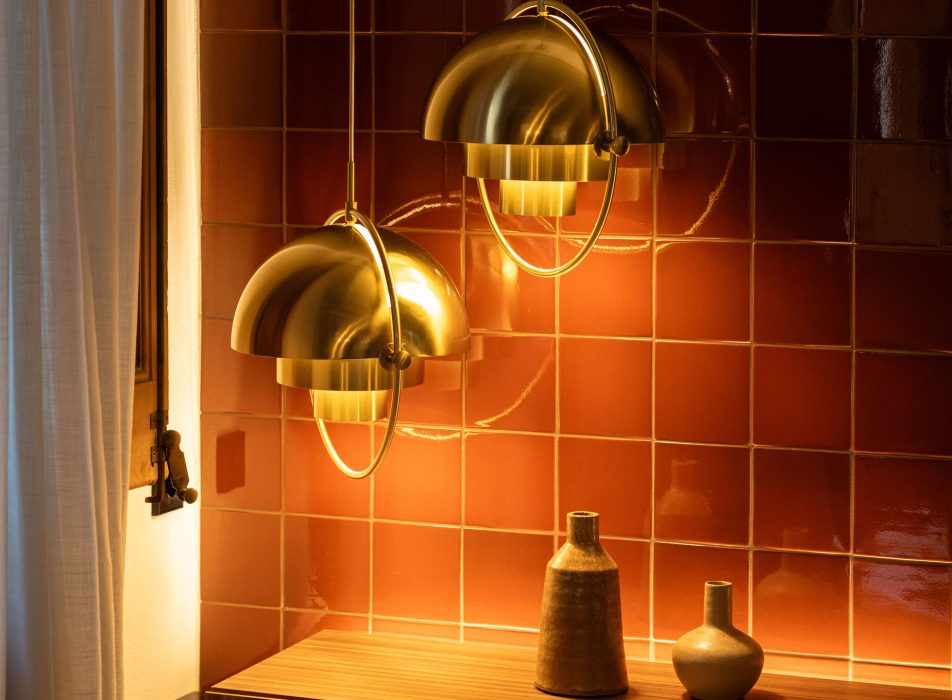
Divide spaces and create scenes through lighting
Imagine a kitchen. It is a multifunctional space in which different scenes converge within the same ecosystem: an area for handling food, another for storing it, an area for taking care of utensils and another for eating and enjoying the prepared dishes. In this scenario, therefore, it will be essential to calibrate what type of lighting each scene needs: in the food preparation area we will opt for intense light focused on ensuring optimal visibility. Here, we will opt for bright light sources, such as recessed lamps or LED strips under the knives, for example, to create a functional and efficient scene. On the other hand, however, within the kitchen dining area, the same intensity of light will not be required and we will look for a light balance using lamps, for example, hanging or recessed with dimmers to create a more relaxed scene and suitable for sharing a meal.
The key to achieving good lighting inside a home lies in understanding and embracing the diversity of implicit functions within each space that makes up a home. From Coblonal, we consider each environment as an individual scene that requires specific and personalized lighting attention. It is not just about adding light to a space, but about creating unique visual experiences that satisfy the particular needs of the user within each scene.
Precisely, the importance of this approach extends to all areas of the home. And to successfully achieve this goal, it is essential to pre-design the specific scenes inside the home so that the user can modulate the lighting according to their needs and preferences. For this reason, choosing floor or table lamps is an infallible card to play to provide the necessary flexibility that allows the user to adjust to the light intensity of each scene.


Designer lamps: a lighting must
There are many types: floor lamps, table lamps, and even hanging lamps. We have a very wide range of options so you don’t just opt for the hegemonic model of LED strips to light up spaces.
Moving away from the more conventional options, at Coblonal we opt for designer lamps to dress up our spaces. And this typology of pieces are key elements in our approach to give spaces a unique mark, and thus enhance their character, aesthetics and personality. Incorporating designer lamps is essential if you want to provide each scene in your home with unique and characteristic lighting.
Beyond its functionality, it is also important to emphasize that, when choosing a lamp, it is important that it is visually attractive both on and off. Carefully selecting each piece will be key to ensure that it fulfills a double function: bathe the space in an appropriate light and bring character and distinction to the scene in which we want to incorporate it.
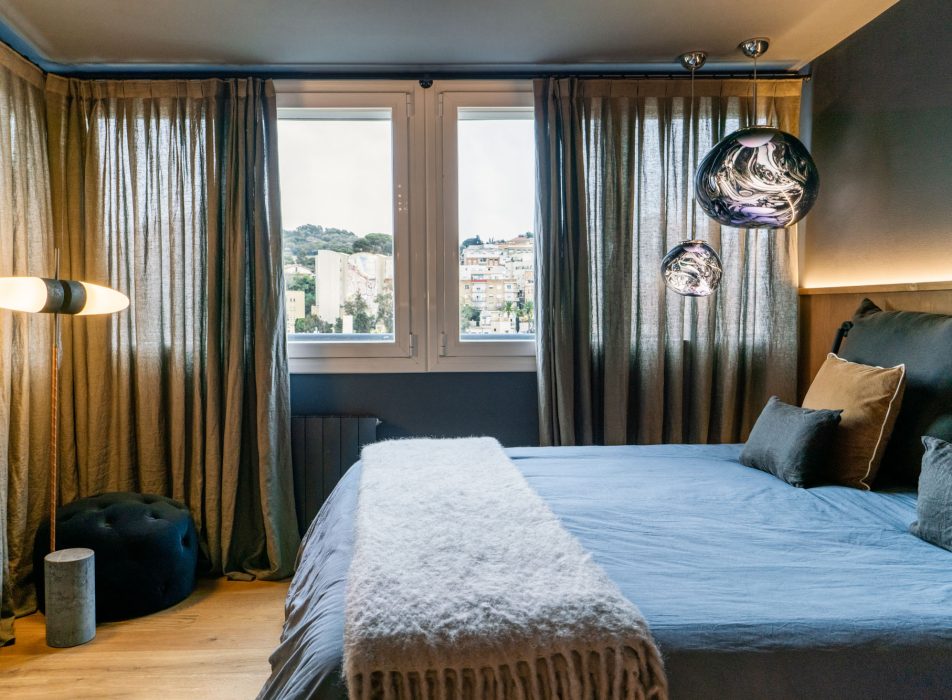

Key point to avoid: glare
It is essential to look for lamps and devices that segment the light uniformly if the final goal is to create lighting that integrates harmoniously into the environment. Looking for a balanced play of light within the spaces involves avoiding sharp light contrasts, and making sure that the lighting is not perceived as intrusive. The abuse of light can become an obstacle when creating cozy and functional environments.
Emphasis must be placed on the importance of avoiding lighting that is aggressive or annoying to the eye. This point, however, is a challenge that manifests itself especially when we use LED light strips or lamps in which the light source is visible to the eye. To counteract this, we can opt for solutions that bring warmth to the space. In this case, it will be necessary to look for installation methods that hide or soften the direct light, using, for example, diffuser profiles that reduce the light intensity. This prism will allow us to improve the aesthetics, love the lighting of the space and achieve a pleasant and soft ambient light.
In the case of lamps, the key to success is choosing pieces that avoid direct visibility of the bulb. And the fact is that aesthetics are not sacrificed in this process: it is vital to integrate lamps that, even when they are off, bring a decorative touch to the space and become sculptural elements that elevate the overall design of each scene.
Light to see and light to hear
Light has a duality: it is not only a tool to see more clearly, but also a way to feel and experience space. The art of balancing functional light with emotional light is essential to creating environments that are visually appealing and emotionally resonant.
Broadly speaking, the primary function of light to see is to provide the visibility needed to carry out daily activities, while light to feel transcends the values of functionality: we consider light as an emotional bridge that shapes the atmosphere of a space In rest areas, for example – such as the bedroom or the living room -, we will look for warm tones and soft lights that invite pause and comfort, exploring light sources such as hanging lamps, wall sconces or lamps of tabletop that add a layer of texture, warmth and depth to the scene.
By fusing light to see and light to feel, a visual harmony is achieved that transforms spaces into versatile scenarios. It is an almost holistic approach to lighting that allows us to design well-lit spaces that evoke emotions and satisfy the particular needs of each user.
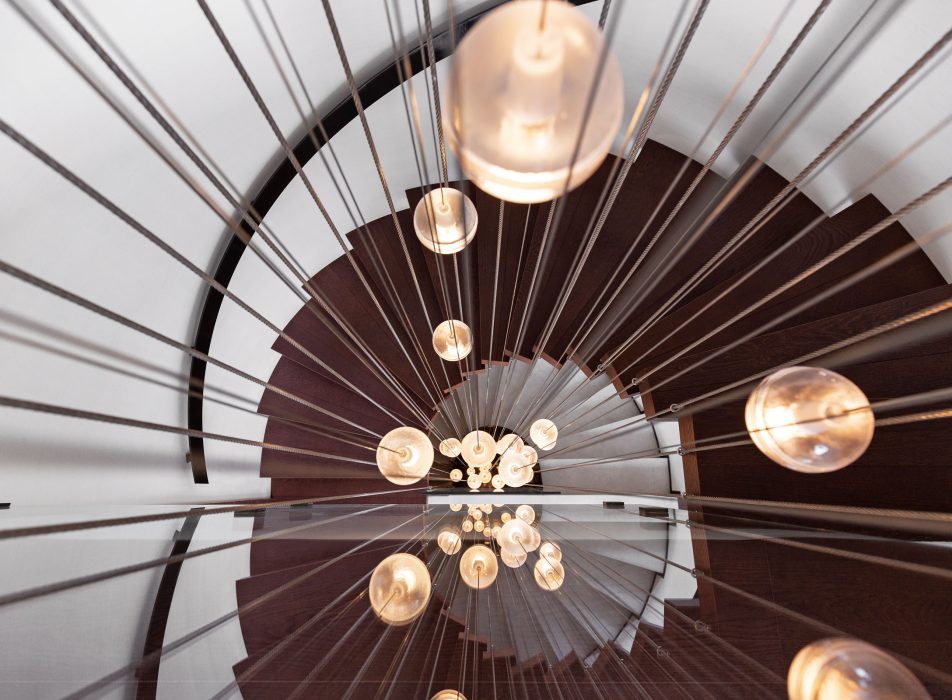
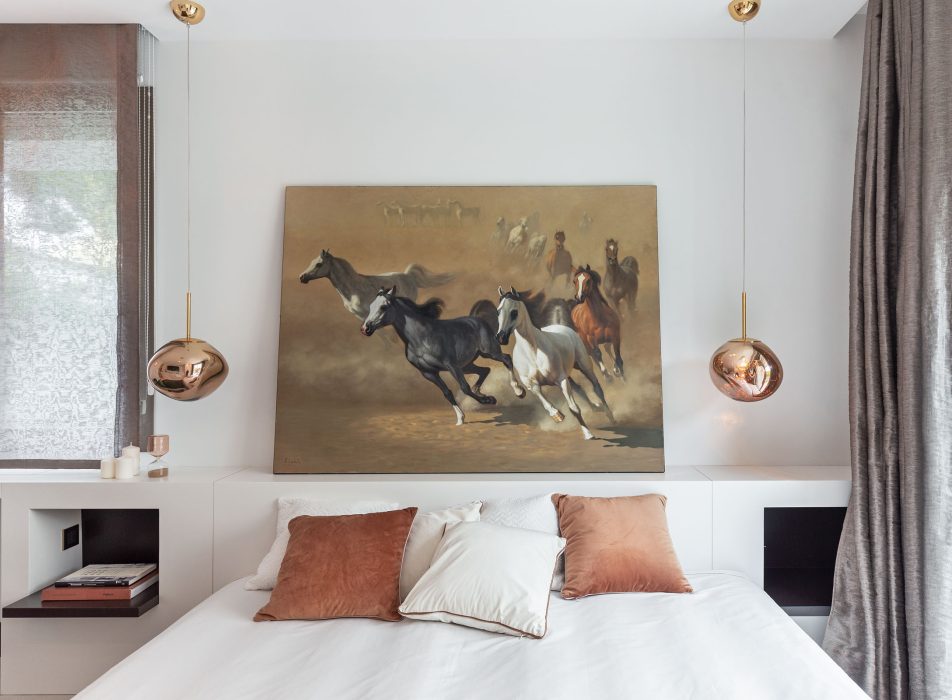
Modulating the temperature with light: warm lighting and white light
Currently, the abuse of white light has become a fairly widespread trend in the design of interior spaces. The choice of color temperature is a crucial aspect to guarantee a welcoming and uniform lighting experience in every project. That’s why avoiding the excessive use of white light is the key to preserving the warmth and harmony of each scene.
The indiscriminate use of cold white light can end up generating a clinical and unwelcoming atmosphere at home. In fact, white light used in excess can negatively affect the circadian rhythm and the quality of sleep. Still, maintaining a balanced color temperature contributes to the creation of an environment that respects the body’s natural rhythms and promotes the user’s overall well-being.
Following this line, therefore, in a rest area we will opt for warmer tones that invite relaxation, while in work or study spaces we will choose whiter tones to improve concentration.
But this does not imply that white light is banned from the light catalog of interior design. Its consistent and balanced use creates visual continuity and reinforces the identity of the spaces by creating bright, functional and comfortable scenes.


